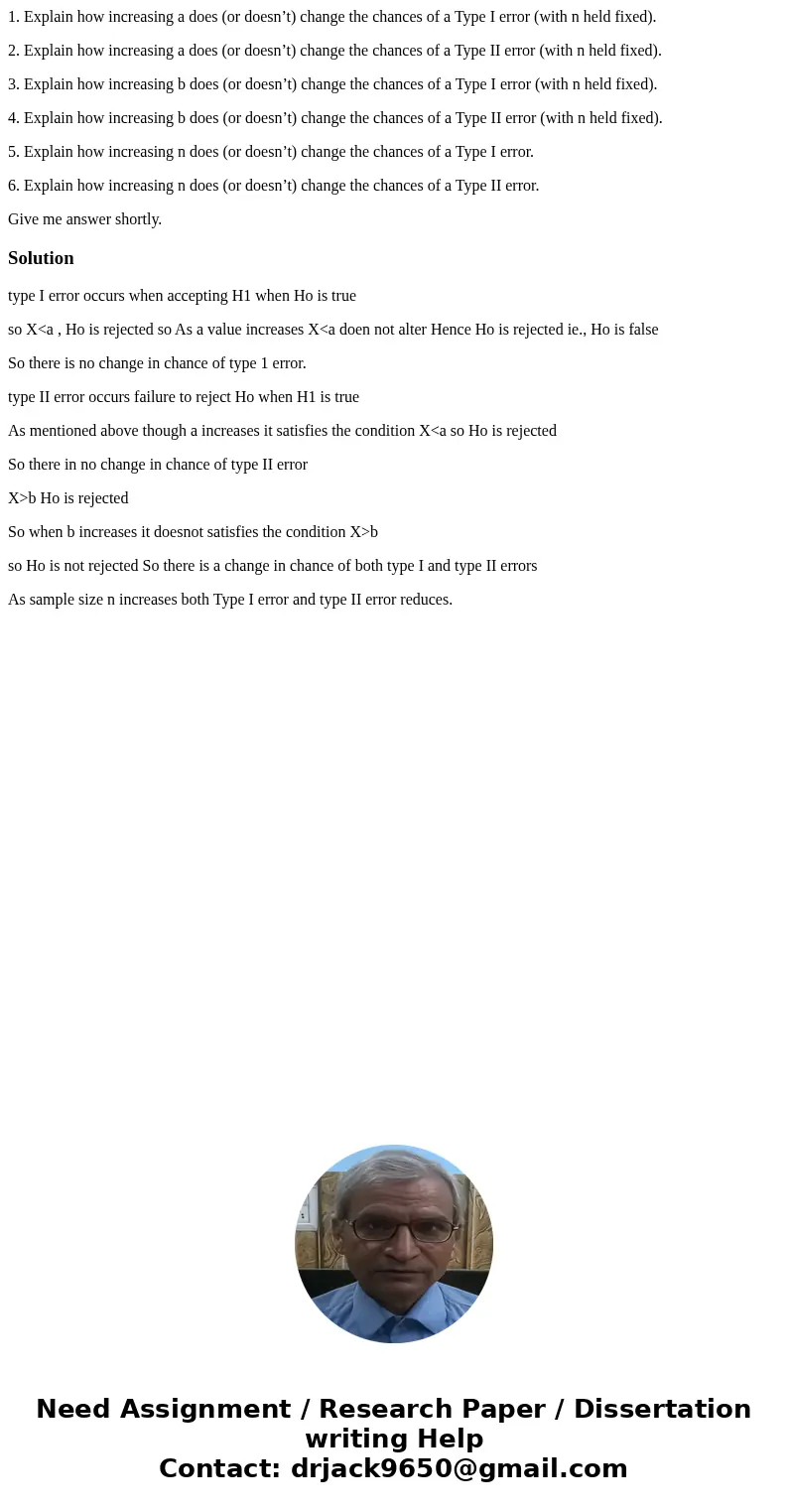1 Explain how increasing a does or doesnt change the chances
1. Explain how increasing a does (or doesn’t) change the chances of a Type I error (with n held fixed).
2. Explain how increasing a does (or doesn’t) change the chances of a Type II error (with n held fixed).
3. Explain how increasing b does (or doesn’t) change the chances of a Type I error (with n held fixed).
4. Explain how increasing b does (or doesn’t) change the chances of a Type II error (with n held fixed).
5. Explain how increasing n does (or doesn’t) change the chances of a Type I error.
6. Explain how increasing n does (or doesn’t) change the chances of a Type II error.
Give me answer shortly.
Solution
type I error occurs when accepting H1 when Ho is true
so X<a , Ho is rejected so As a value increases X<a doen not alter Hence Ho is rejected ie., Ho is false
So there is no change in chance of type 1 error.
type II error occurs failure to reject Ho when H1 is true
As mentioned above though a increases it satisfies the condition X<a so Ho is rejected
So there in no change in chance of type II error
X>b Ho is rejected
So when b increases it doesnot satisfies the condition X>b
so Ho is not rejected So there is a change in chance of both type I and type II errors
As sample size n increases both Type I error and type II error reduces.

 Homework Sourse
Homework Sourse